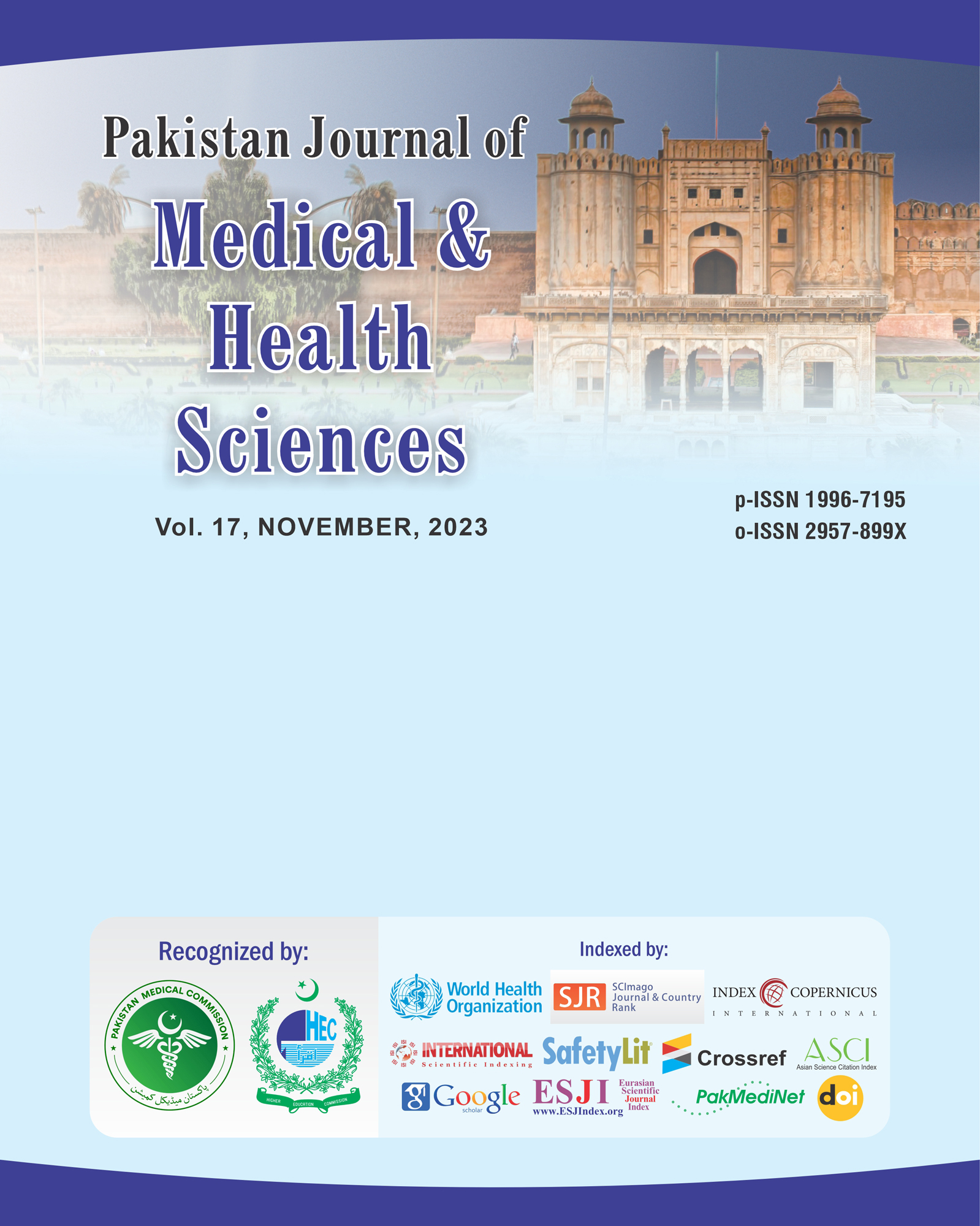Comparison of Superficial Surgical-Site Infection Rates between Primary and Delayed Primary Wound Closure in Open Appendectomy for Gangrenous or Perforated Appendicitis
DOI:
https://doi.org/10.53350/pjmhs20231711232Abstract
Background: Surgical‐site infection (SSI) is a common and costly complication following open appendicectomy for gangrenous or perforated appendicitis. In resource-limited, high-volume settings, the optimal skin-closure strategy immediate primary closure (PC) versus delayed primary closure (DPC) remains unclear.
Objective: To compare the incidence of superficial SSI, length of hospital stay, wound-care burden and patient discomfort between PC and DPC in adults undergoing open appendicectomy for complicated appendicitis.
Methods: In this comparative study at Civil Hospital Quetta and Mayo Hospital Lahore (June 2022–May 2023), eighty consecutive patients (aged 18–65 years) with intra-operative confirmation of gangrenous or perforated appendicitis were alternately allocated to PC (n = 40) or DPC (n = 40). All subjects received the same peri-operative antibiotic regimen and operative technique; DPC patients had skin closure deferred until postoperative day 4. Primary outcome was superficial SSI within 30 days. Secondary outcomes included hospital length of stay, number of dressing changes, and pain during dressing (0–10 scale). Continuous data were compared by Student’s t-test or Mann–Whitney U test; categorical data by chi-square or Fisher’s exact test.
Results: Baseline demographics and operative factors were comparable. SSI occurred in 14/40 (35 %) PC patients versus 6/40 (15 %) DPC patients (absolute risk reduction 20 %, p = 0.02). Mean hospital stay was shorter with DPC (5.3 ± 1.4 days vs 6.2 ± 1.8 days; p = 0.015). DPC required more dressing changes (4.9 ± 0.8 vs 2.1 ± 0.5; p < 0.001) and higher pain during dressing (4.1 ± 1.1 vs 2.3 ± 0.8; p = 0.001), but pain levels equalized after skin closure. No wound dehiscence, deep SSI or mortality occurred.
Conclusion: Delayed primary closure significantly reduces superficial SSI rates and shortens hospital stay at the expense of transiently increased early wound-care demands and discomfort. In similar surgical environments, DPC is a pragmatic approach to enhance postoperative outcomes.
Keywords: Appendectomy, Infection, Closure, Gangrene, Perforation, Wound, Healing
Downloads
How to Cite
Issue
Section
License
Copyright (c) 2023 Aliya Hashmi, Farhana, Sheema Memon, Muhammad Shahid Farooq, Asma Shauket, Muhammad Iqbal

This work is licensed under a Creative Commons Attribution 4.0 International License.


